New cars are way too freaking expensive. Sure, they have more showroom appeal than ever before, but a lot of people who could spend about $30,000 on a new car ten years ago can still only spend about $30,000 on a new car. At the same time, fuel’s become more expensive, and the number of cars out there for less than 30,000 greenbacks is smaller than ever before. Thank goodness the Hyundai Elantra Hybrid still exists.
This isn’t the first time we’ve been behind the wheel of Hyundai’s electrified compact sedan, but a lot has changed since 2023. Not only did the Elantra get a facelift, the whole new car market has grown even more wild. Just last month, the average price of a new car in America crossed the $50,000 barrier, and while part of that was due to a rush on EVs before federal tax credits ended, it still means we’re living in a world where a four-figure car payment is increasingly normalized. So what can you still get for less than half that? An excellent daily driver, as it turns out.
[Full disclosure: Hyundai Canada brought this Elantra Hybrid to AJAC TestFest, where I was finally able to take it out for a proper evaluation.]
The Basics
Engine: 1.6-liter Atkinson-cycle twin-cam inline-four.
Battery Pack: 240-volt nominal 1.32 kWh lithium-polymer.
Transmission: Six-speed dual-clutch automatic transmission.
Drive: Front-wheel-drive, open differential.
Output: 139 horsepower, 195 lb.-ft. of torque.
Fuel Economy: 51 MPG city, 58 MPG highway, 54 MPG combined on 16-inch wheels; 49 MPG city, 52 MPG highway, 50 MPG combined (4.8 L/100km city, 4.5 L/100km highway, 4.7 L/100km combined) on 17-inch wheels.
Body Style: Four-door compact sedan.
Base Price: $26,695 including freight ($32,999 in Canada).
Price As-Tested: $31,045 including freight ($32,999 in Canada).
Why Does It Exist?
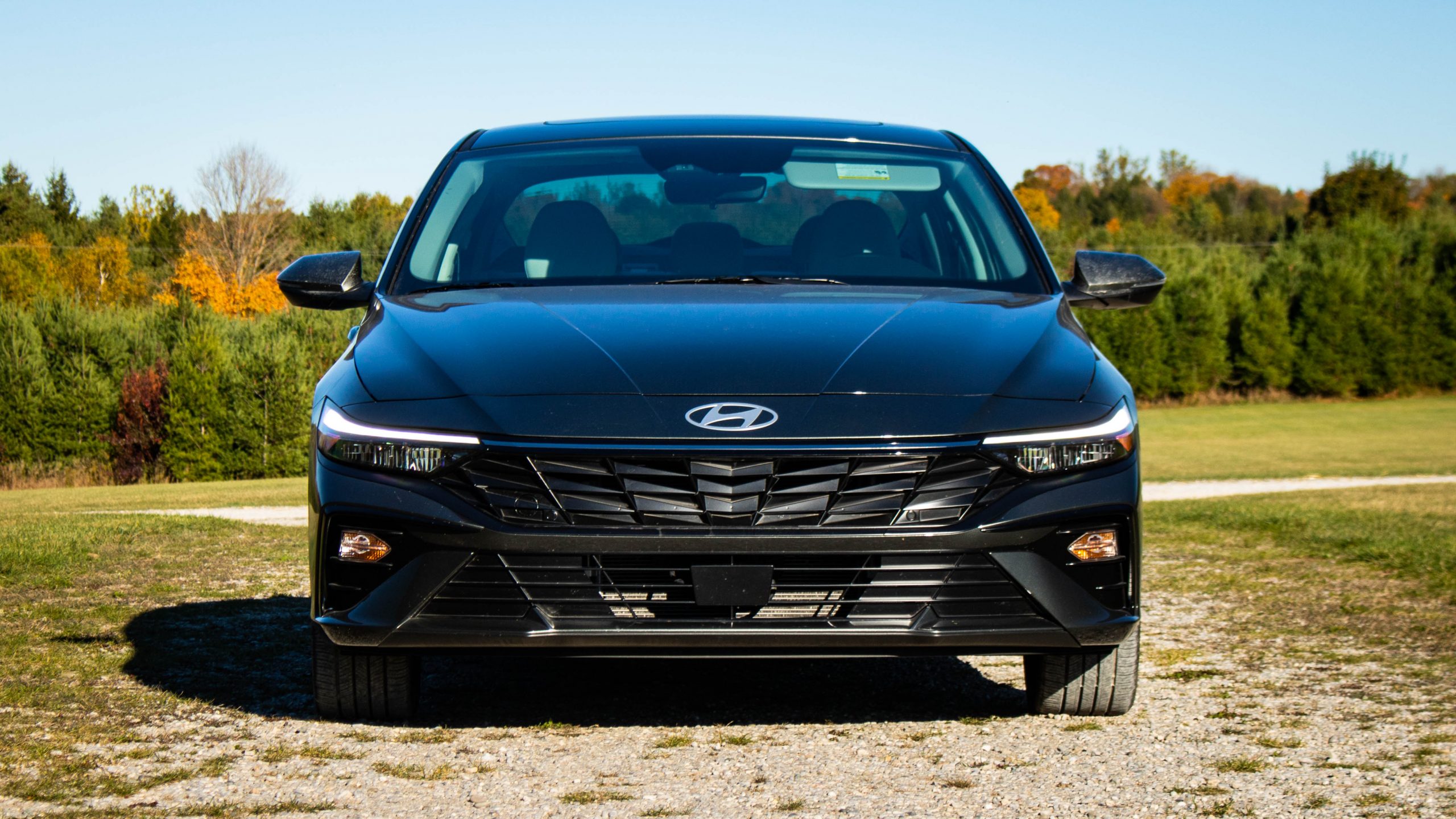
In case you haven’t looked at the new car market in a decade, hybrids are hotter than those glowing metal balls you see while doomscrolling, so it simply makes sense that Hyundai builds an Elantra Hybrid to do battle against the Toyota Corolla Hybrid and the Honda Civic Hybrid. When it comes to reasonably priced fuel-sippers, this is one of the big three.
How Does It Look?

You know how baby pangolins always look like they’re about to sheepishly deliver some mildly sad but not day-ruining news? I know we humans are prone to anthropomorphizing everything under the sun, but I swear there’s a hint of endangered scaly anteater to the look of the Elantra. Maybe it’s the interplay of the bulbous silhouette with the angular character lines, maybe it’s exacerbated by the diamond pattern in the C-pillar filler panels, but like the strange-looking animal, this is one strange-looking car. Still, sometimes good things come in strange-looking packages.
What About The Interior?
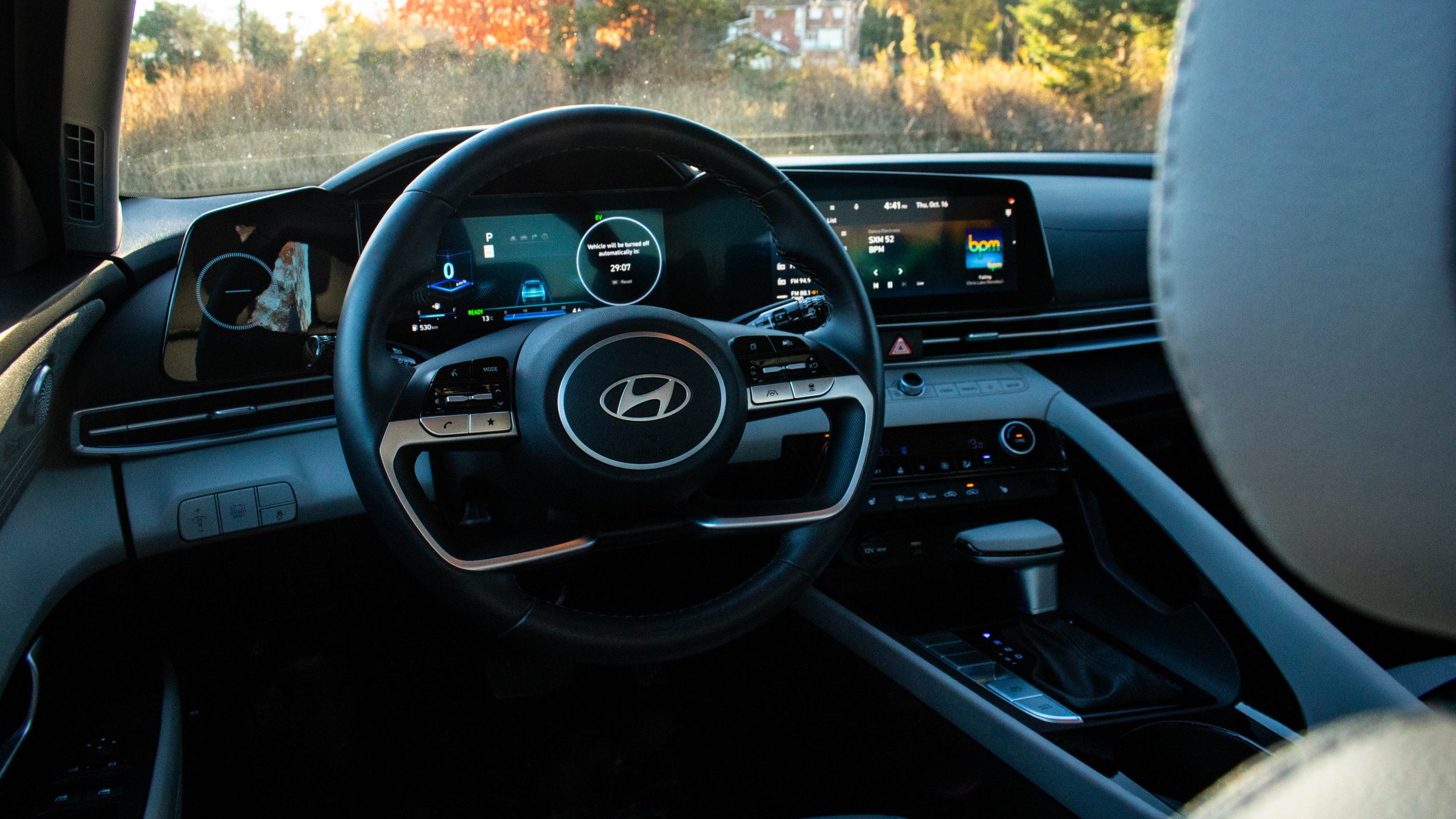
Maybe it’s just me, but as the average car continues to grow more expensive, I’m warming up to the cabin of Hyundai’s value sedan. Alright, I wouldn’t trust the console grab handle to withstand much more than the weight of a chicken shawarma platter, but apart from that, nothing inside the Elantra feels flimsy or egregiously cheap. Some of it’s properly nice, like real metal trim and available denim-like cloth on the door cards. The only real complaint I have when it comes to usability is the metal trim on the steering wheel. It’s right where the edge of your palms rest with your hands at nine-and-three, and it gets frigid when the mercury hits the zone that tells you who’s wearing too thin a shirt.
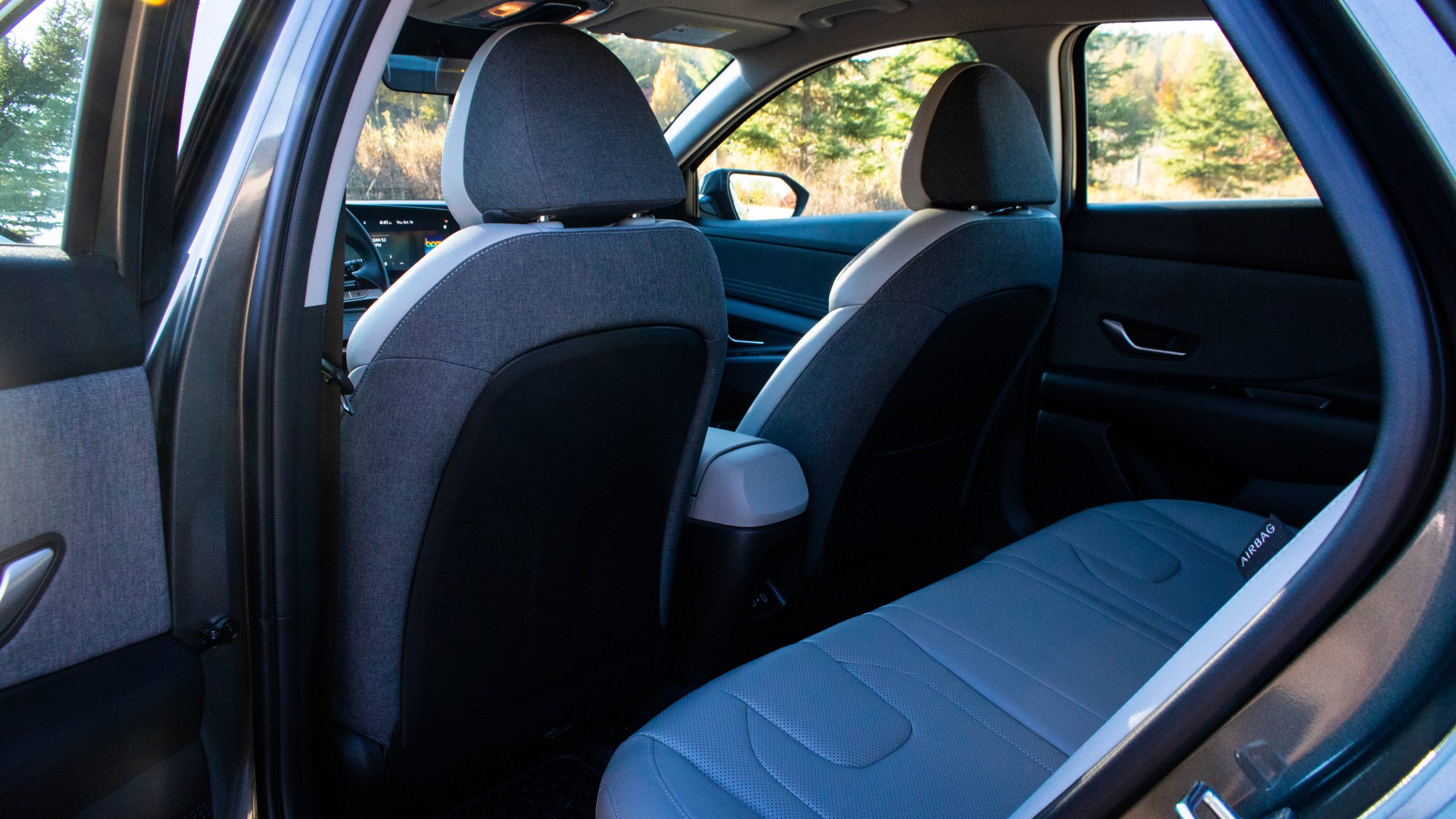
Besides, the big story here is space and comfort. It’s no secret the Elantra is big-boned for a compact, but that just means you can get three real adults in the rear seat, and all of their luggage for a weekend away fits in the 14.2 cu.-ft. trunk. Of course, the best seats in the house are still up front, with a surprising amount of support for compact car thrones. We’re talking cushions that don’t seem like topographical maps of Kansas and instead actually feel designed for real human beings, a good reason to consider the Elantra Hybrid over the Corolla Hybrid. I do wish the tilt-and-telescoping steering column telescoped further towards the driver, but the overall driving position is perfectly comfortable for someone of average height.
How Does It Drive?

Of course, if you’re considering making a Hyundai Elantra Hybrid your next daily driver, it’s probably not simply due to its spaciousness and out-there looks. After all, you can get those in a regular non-hybrid model, but the hybrid powertrain really is something special beyond its headline fuel economy figures.
On paper, it may only pump out 132 horsepower, but 195 lb.-ft. of combined torque mean that off the mark and when changing lanes, the Elantra Hybrid always feels perfectly quick enough. What’s more, because this sedan uses a six-speed dual-clutch automatic transmission instead of a CVT, you aren’t forced to listen to an atonal wall of sound should you need to put the skinny pedal to the carpet. Score. Of course, this test car has the big wheels that knock fuel economy down a touch, but it still returned an honest 51 MPG with journalists treating the throttle pedal like a stompbox all day.
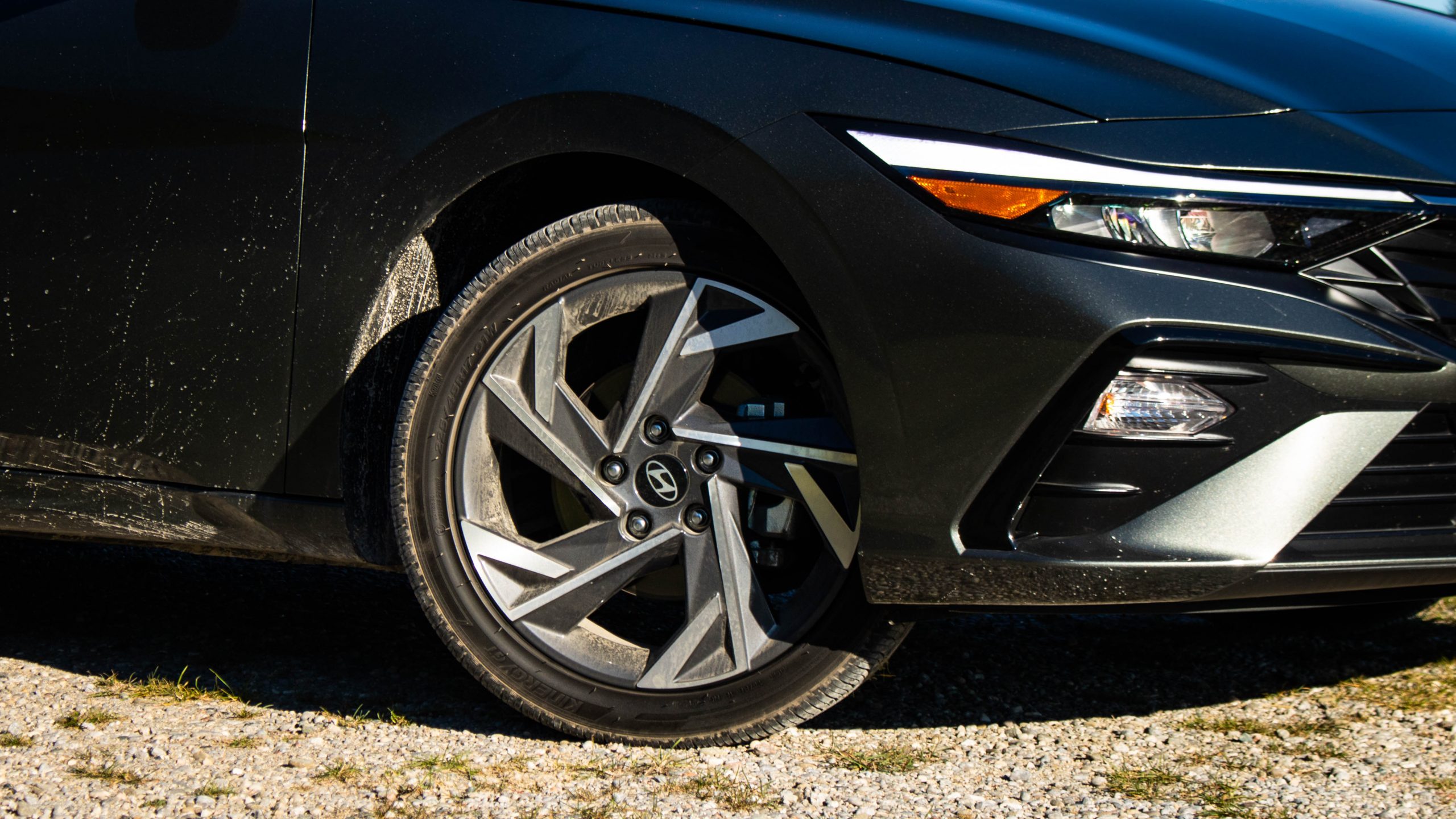
Even though the Elantra Hybrid gets multilink rear suspension, don’t expect it to feel like a sport compact car with hybrid efficiency. This thing leans firmly toward comfort, because most people just want a smooth ride home after eight hours in the cubicle. It turns out that all the fuss Hyundai made about structural adhesives means the comfy suspension can actually do its job, so this compact sedan glides over bumps with the grace of a midsizer. See, the operative word here is “natural.”
The steering weighs up like you’d expect steering to. The brake pedal feels normal, almost like it doesn’t have to blend regenerative braking from the electric motor with hydraulic braking from the, um, brakes. Even the shifter’s normal, so you could give the Elantra Hybrid to someone who’s been driving a 2006 Civic for the past two decades, and nothing will seem weird to them. Fantastic.
Does It Have The Electronic Crap I Want?

Sort-of. All the gadgetry inside the Elantra Hybrid feels a bit five years ago, but in ways that aren’t exactly a letdown. Apple CarPlay and Android Auto only work over a wired USB-A connection, but Hyundai’s previous-generation infotainment system is still reasonably slick, with logical menus and plenty of physical controls. The digital gauge cluster might not show you what song’s currently playing, but you can set it to this fun cube-themed skin that delivers a bong hit of when-the-internet-was-fun nostalgia directly into your hippocampus.
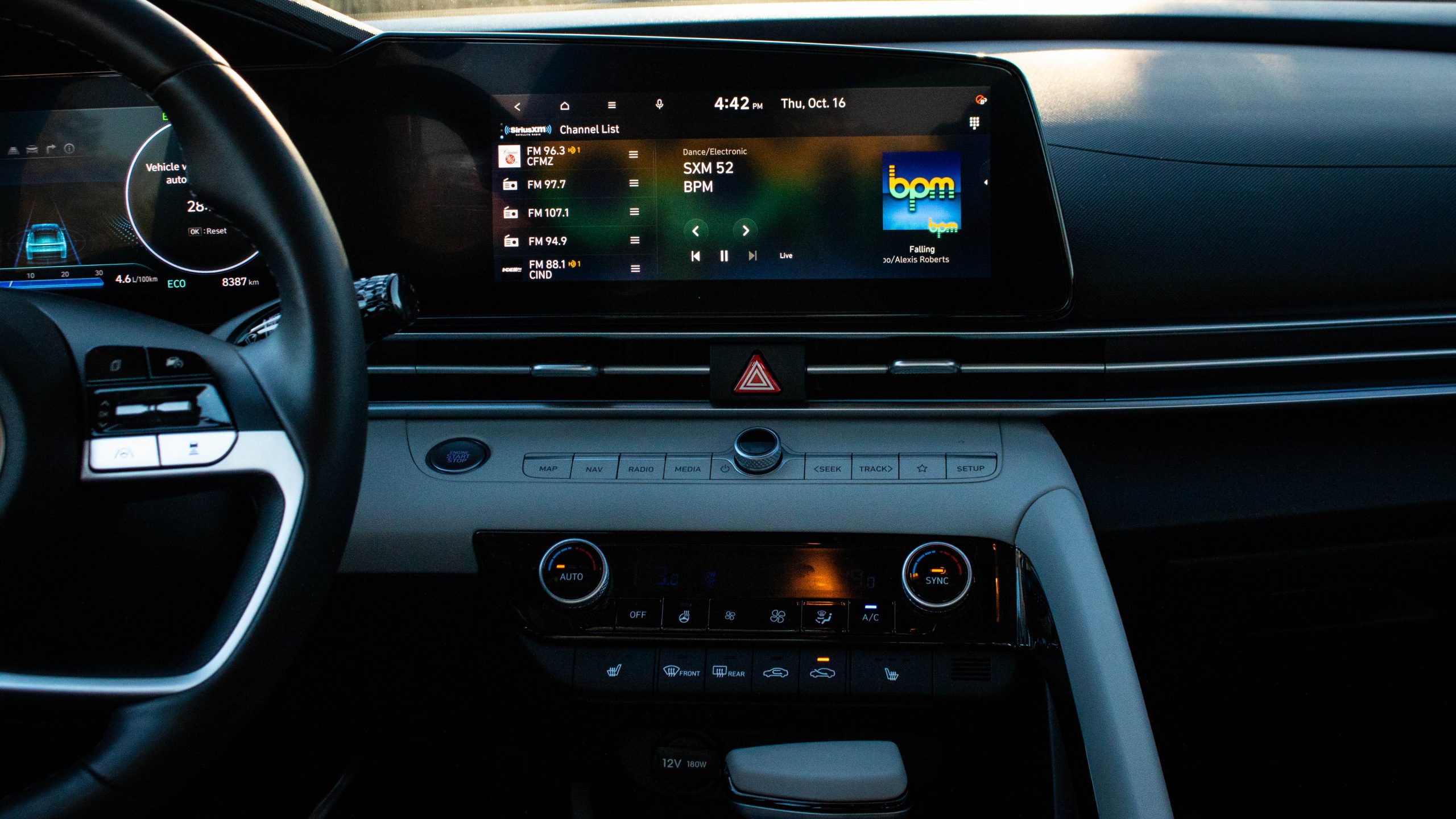
This fully-loaded trim gets a moonroof, dual-zone climate control, wireless smartphone charging, GPS navigation, heated seats, a heated steering wheel, an eight-speaker Bose sound system that isn’t too shabby considering the segment, and ambient lighting, all for a shade over $31,000. That’s a lot of kit for the money.
Three Things To Know About The 2025 Hyundai Elantra Hybrid:
- Diesel-like torque means it doesn’t feel slow.
- It uses a subdivided section of its hybrid battery pack to power its 12-volt electrics, so you’ll never have to buy a replacement lead-acid battery for it.
- You can get one loaded to the gills with toys for about the same price as the cheapest Civic Hybrid.
Does It Fulfill Its Purpose?
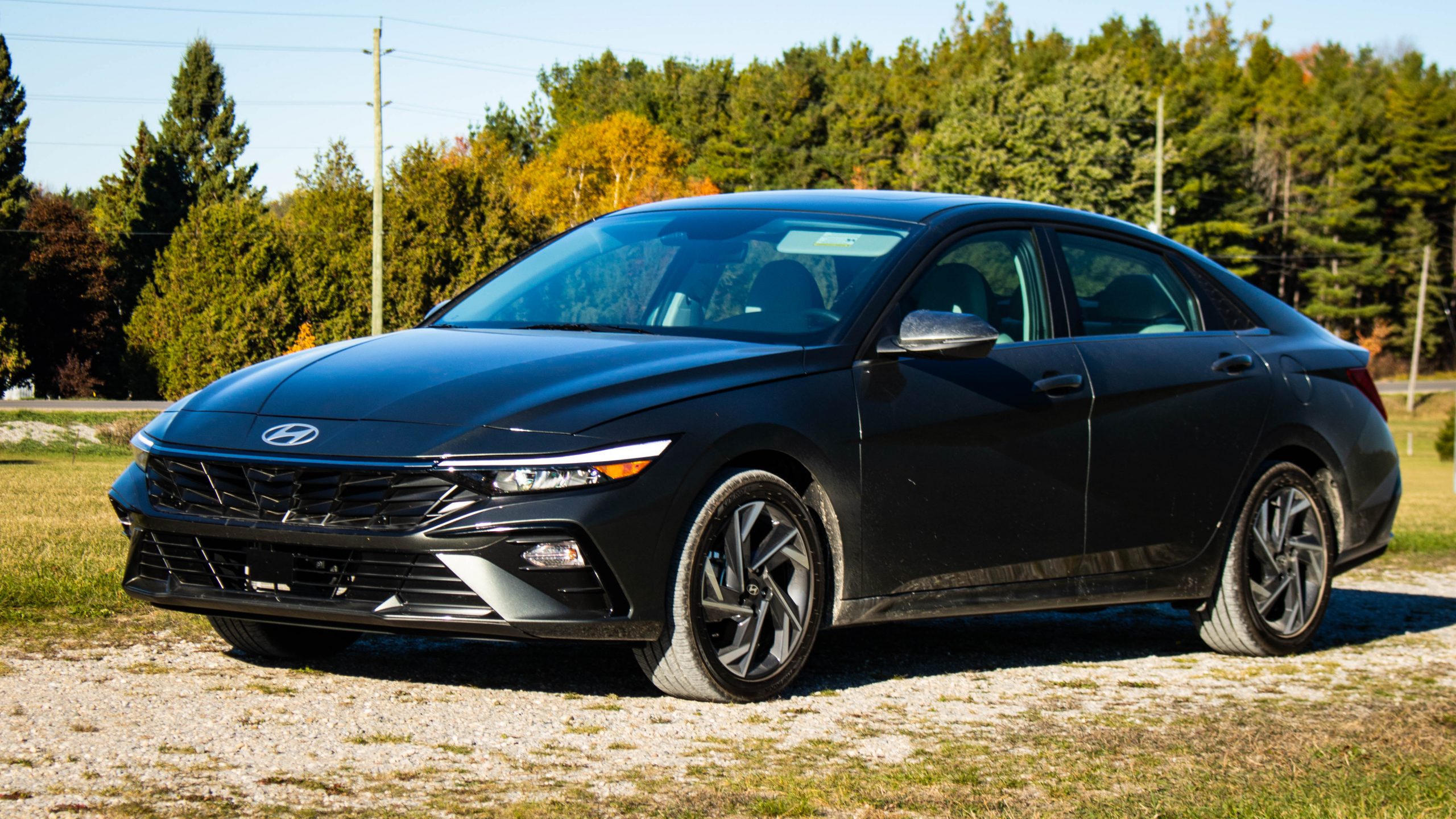
Absolutely. The Hyundai Elantra Hybrid is a lot of good, economical car for the sort of money normal people can actually justify. Whether you’re looking at the $26,695 Elantra Hybrid Blue or the $31,045 Elantra Hybrid Limited, it feels like your money’s going far. While a comparably equipped Honda Civic Hybrid is quicker and more premium-feeling, it’s also thousands of dollars more expensive. At the same time, a Corolla Hybrid doesn’t feel much nicer than the Elantra Hybrid, is a whole lot slower, isn’t as comfortable, and costs about the same as the Hyundai. Even though Toyota has a rock-solid hybrid system, you still have to sit in that driver’s seat every day, so the Elantra Hybrid gets my vote hands-down.
Believe it or not, the Elantra Hybrid is an even better deal in Canada, where its single loaded trim level undercuts the cheapest Civic Hybrid by several thousand loonies, and works out about even with a mid-range Corolla Hybrid on price while offering a handful of features unavailable on the Toyota.
What’s The Punctum Of The 2025 Hyundai Elantra Hybrid?
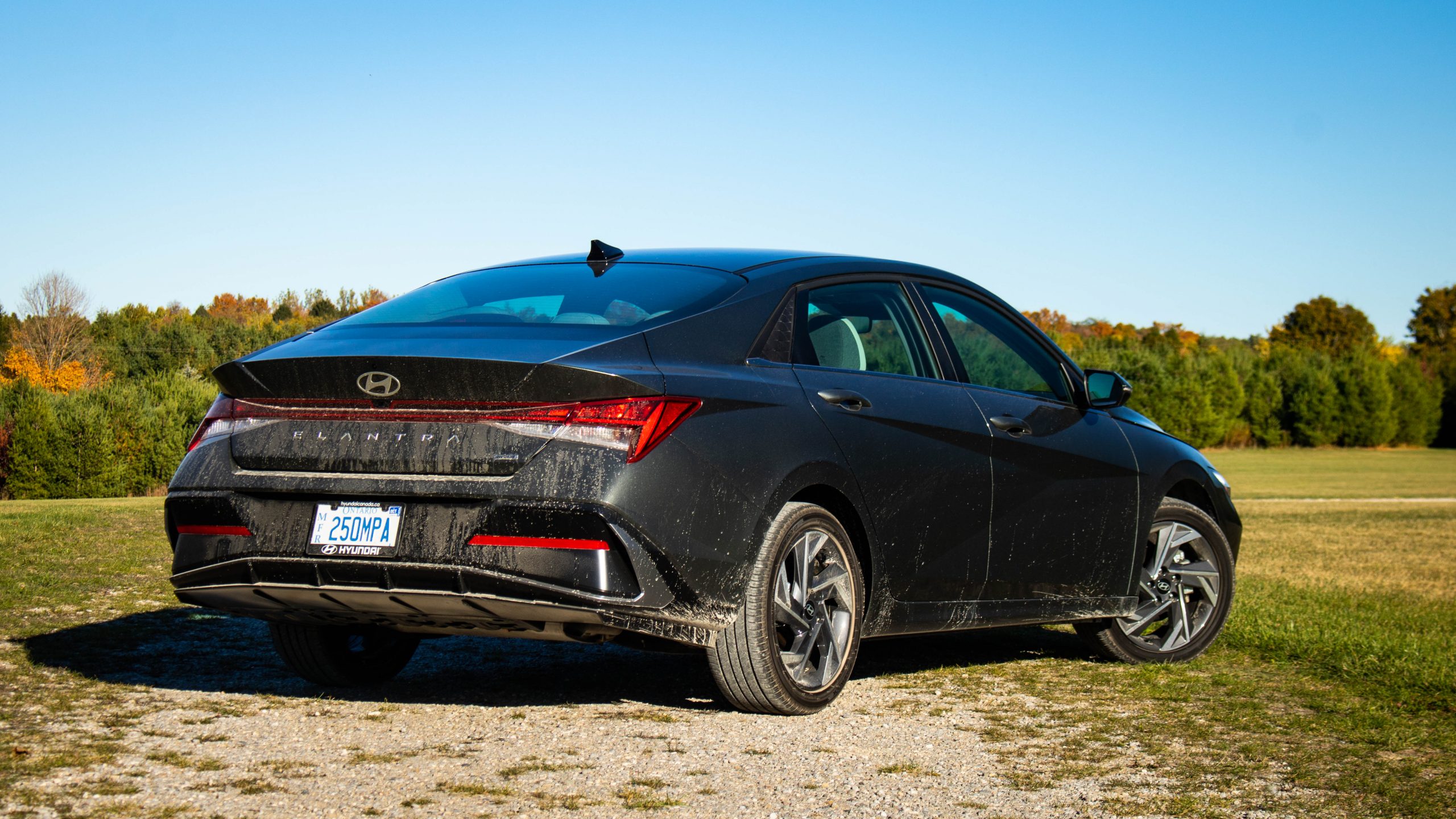
With loads of toys, a great price, proper hybrid fuel economy, and solid comfort, welcome to the happy medium of the hybrid compact sedan market.
Top graphic image: Thomas Hundal

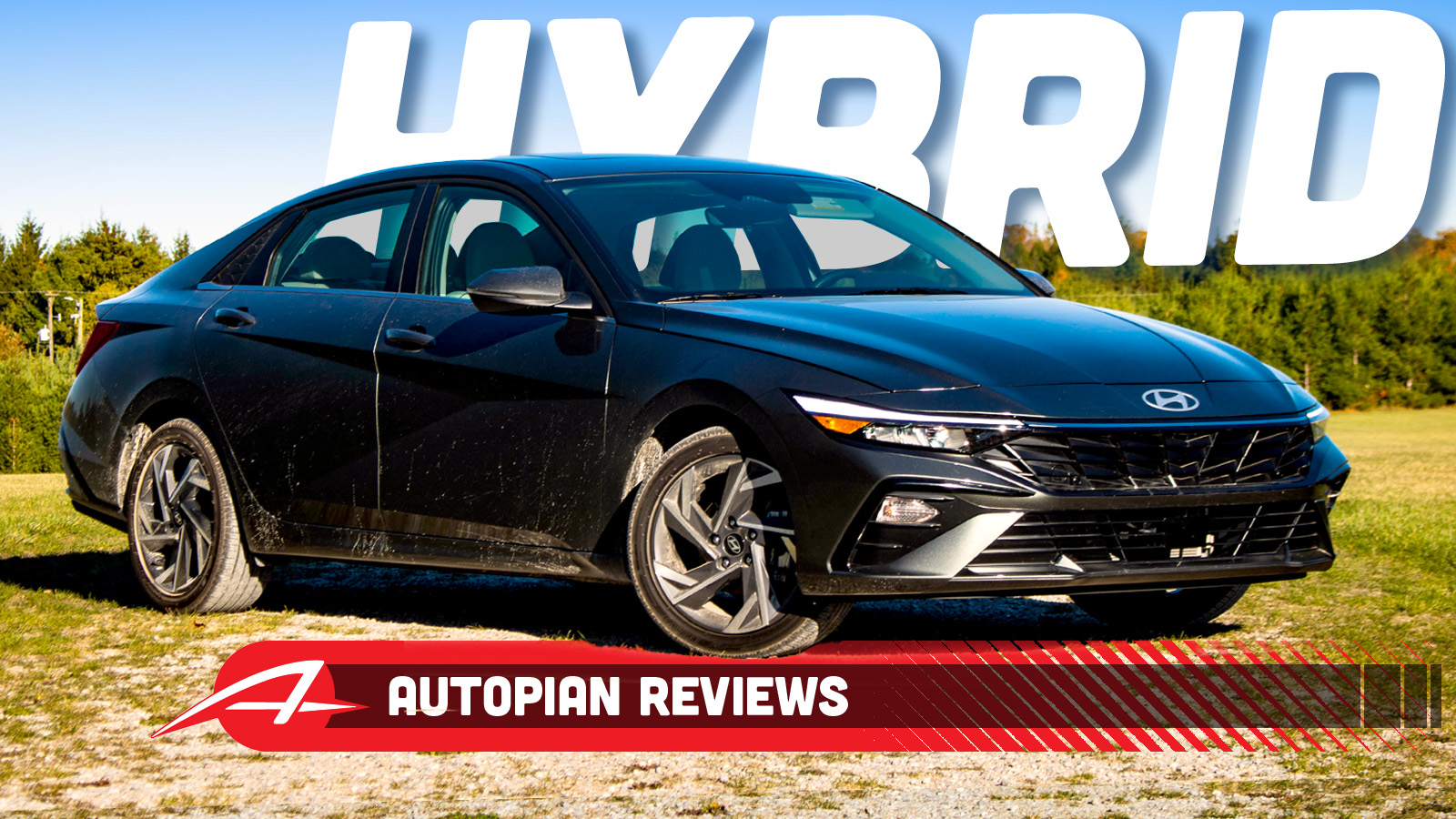




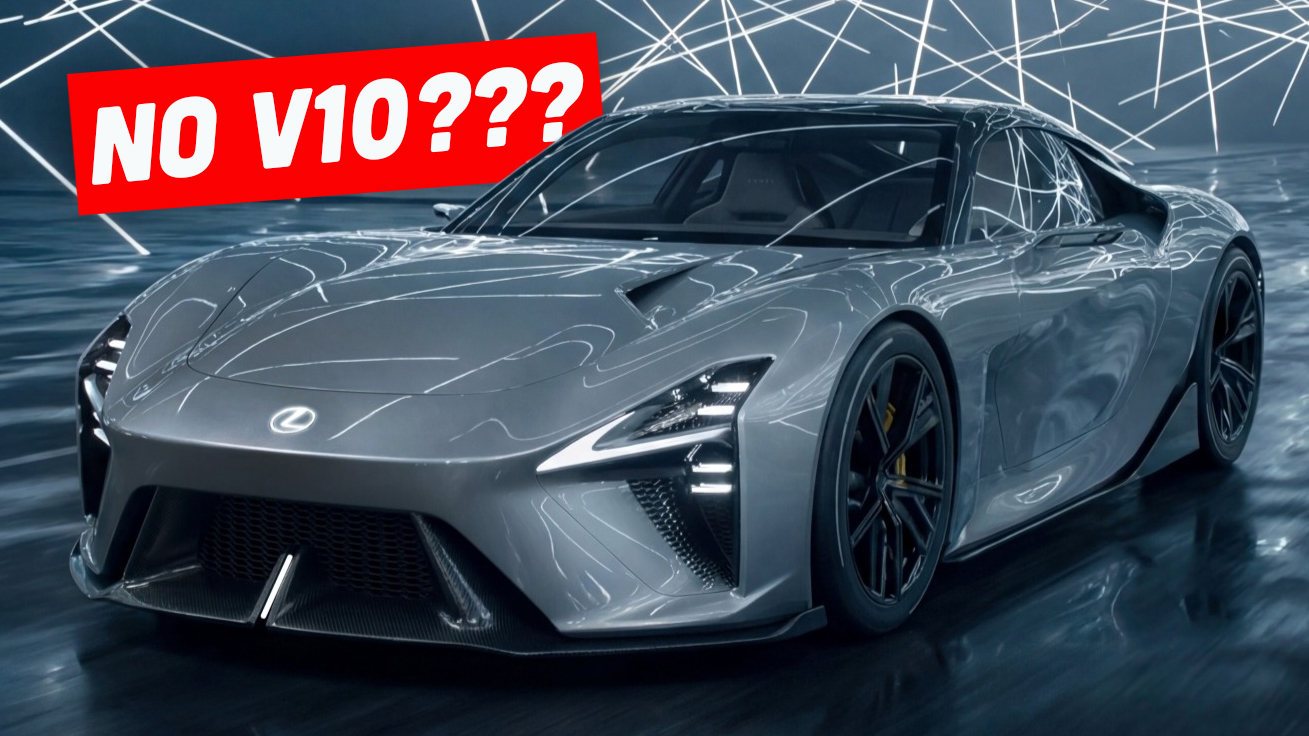
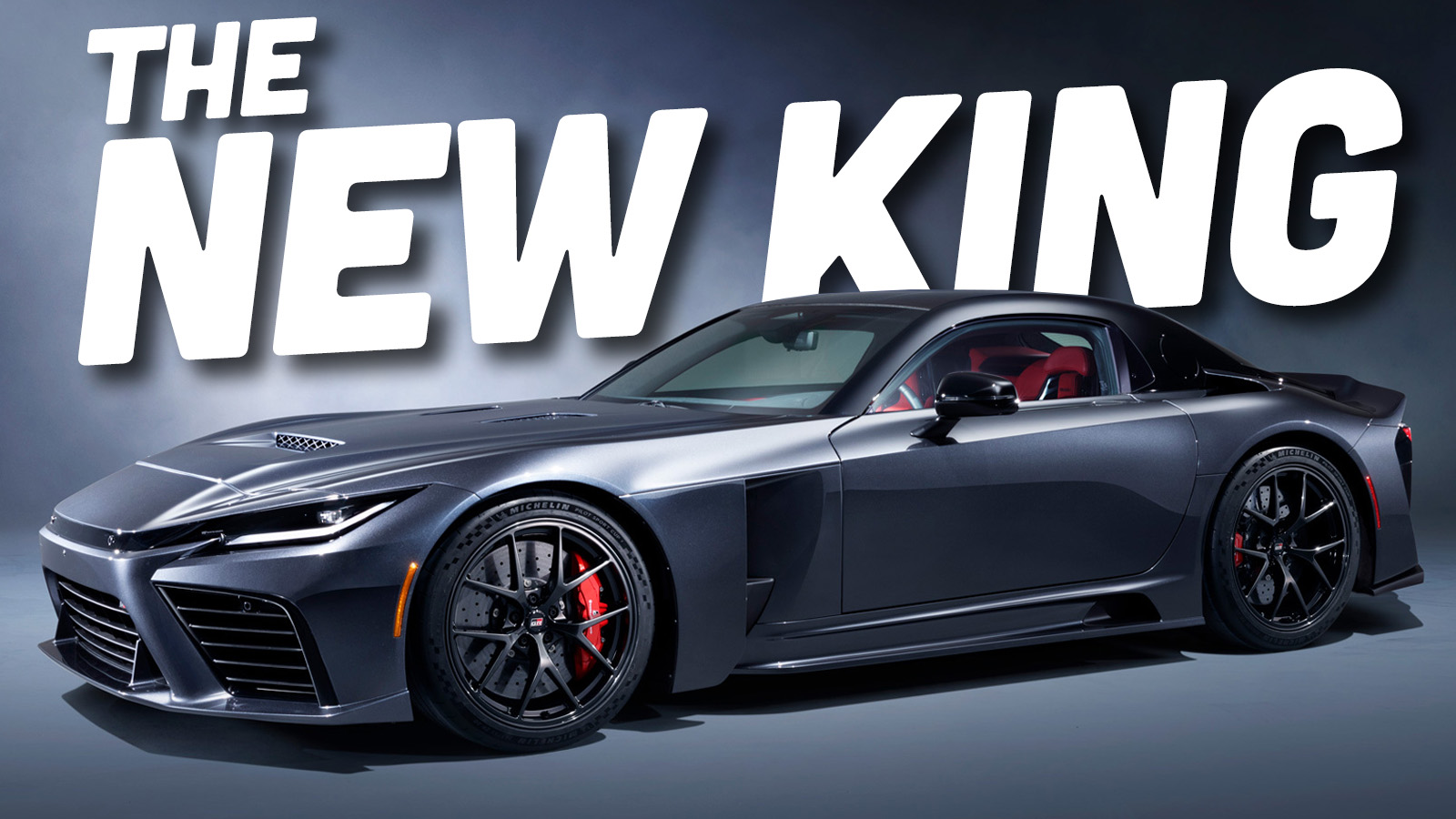

I give this a big fat meh. My wife’s 2022 Elantra SEL gets on average 42mpg. I’m not sure it is worth the added cost to pay for the hybrid for an extra 12 mpg, especially when the electronics is a step down from 2022.
That’s a 28.5% increase in fuel economy. Frankly really impressive. At the average 14k miles a year, and baseline gas cost of $3.199 that’s $1,066.33 in fuel cost per year for your current car, compared to $829.37. A savings of $236.96/year in a rather inexpensive package all things considered.
Obviously it’s not a huge delta, but if you’re coming from something that gets low 30s or worse, that’s a few car payments in savings at the pump per year. It’s cheaper per mile than charging most EVs in public.
This was a significant amount of knowledge that told me I don’t want this. I would wager buying the last model year Toyota Camry/Corolla would give us a cheaper more economically more reliable better for the environment car.
Just curious, is this the base version in Canada?
Ahh, finally got far enough down to find out: yes.
“it gets frigid when the mercury hits the zone that tells you who’s wearing too thin a shirt.” Not sure where this zone occurs. Please post pictures with the temp in each one, through the entire range of this zone. For the science.
When I lived in Juneau, -20F was about when we’d finally close the bathroom window, so there’s a good start for your illustrated temp zone guide.
WTF are you guys eating that 20 below is cold enough to offset the odor?
I lived in multiple apartments there in buildings so old (125 years in one case) that the idea of a “bathroom fan” hadn’t been invented yet. So we’d take our showers with the window open, and just leave it open and forget about it. But even we had our limits.
The real headline is you can get a car with 16″ wheels! Hallelujah! Shove your harsh riding, inefficient 17″+ plus wheels up your trunk hole.
Wow, I thought it was just me.
I really need to buy a new set of 16s for my Tahoe, the late model Chevy OEM 18″ 265/65-R18’s I got cheap ride like a brick compared to the stock size 265/75-R16’s.